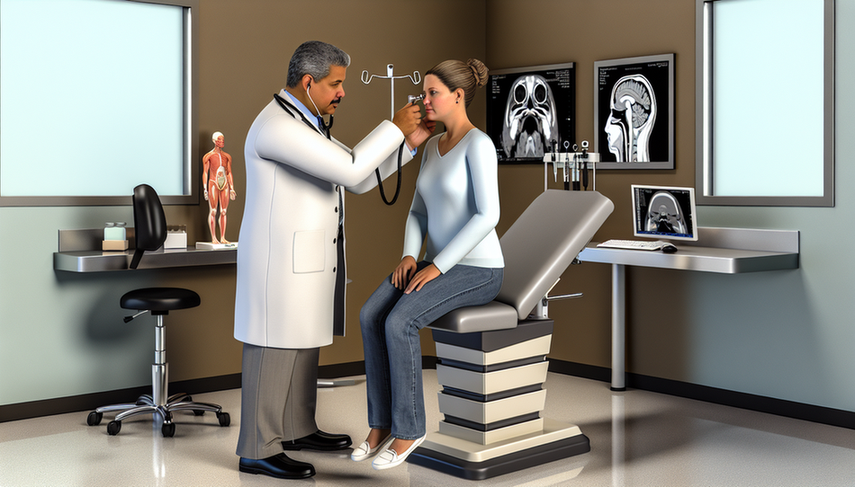Sinusitis Diagnosis: ENT Examination and Imaging Tests for Bacterial Sinusitis

Dear colleagues, the diagnosis of sinusitis is a common challenge in our daily clinical practice. Sinusitis, an inflammation of the paranasal sinuses, can be acute or chronic and presents with symptoms such as nasal obstruction, postnasal discharge, facial pain, and, in some cases, bacterial sinusitis. Accurate identification of this condition is crucial for effective treatment and to avoid complications.
ENT Examination and Imaging Tests
Rhinoscopy is an essential tool in the initial evaluation of sinusitis. It allows for direct visualization of the nasal cavity and identification of signs of inflammation or structural abnormalities. However, for a more precise sinusitis diagnosis, imaging tests are fundamental.
The CT of paranasal sinuses is the gold standard in the evaluation of sinusitis. It provides detailed images of the paranasal sinuses, allowing for the identification of opacities, mucosal thickening, and other alterations [1]. Additionally, CT is particularly useful in detecting sinusitis of dental origin, where three-dimensional resolution is crucial [2].
In complex cases or when intracranial or intraorbital complications are suspected, magnetic resonance imaging (MRI) can complement the CT, providing better soft tissue resolution [3].
Conclusions
The accurate diagnosis of sinusitis requires a combination of clinical examination and imaging tests. Rhinoscopy remains a valuable tool, but the CT of paranasal sinuses is indispensable for a comprehensive evaluation. Collaboration between ENT specialists and dental professionals is crucial, especially in cases of sinusitis of dental origin [4]. By integrating these techniques, we can significantly improve the management of our patients and optimize therapeutic outcomes.
References
- [1] Isolated Sphenoid Sinusitis
- [2] Sinusitis of dental origin
- [3] Sensitivity and specificity of computed tomography and magnetic resonance imaging in the diagnosis of isolated sphenoid sinus diseases
- [4] One-stage combined ENT and dental surgical treatment of odontogenic sinusitis: a prospective study
Created 5/1/2025
